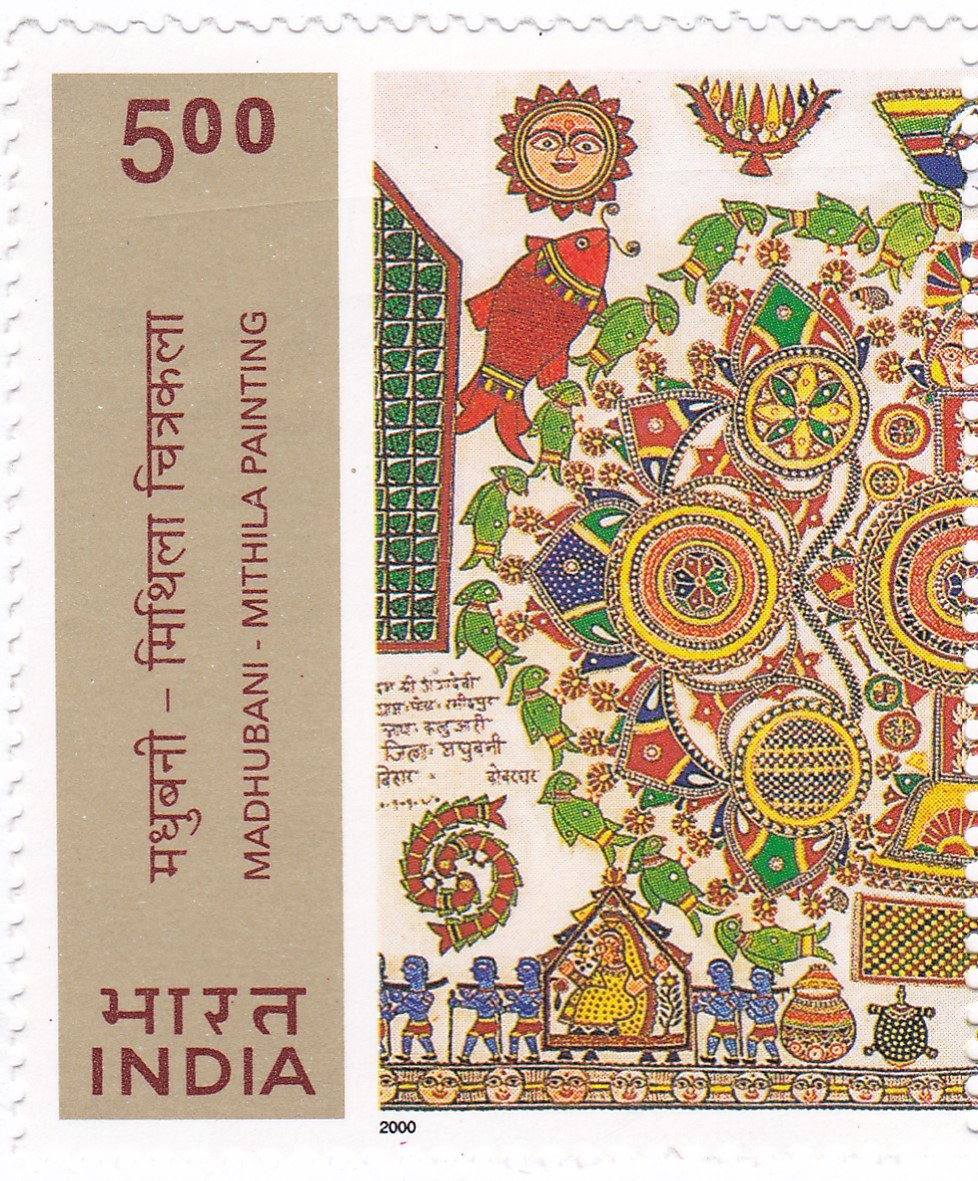Lotus Plant Motif (Ganga Devi)

Technical Data
| Stamp Set | Madhubani Mithila Paintings |
|---|---|
| Date of Issue | October 15, 2000 |
| Denomination | Rs. 5 |
| Quantity | 3,000,000 |
| Perforation | comb 13½ |
| Printer | Calcutta Security Printers Ltd |
| Watermark | No Watermark |
| Colors | Multicolor |
| Catalog Codes |
Michel IN 1789 Stamp Number IN 1853a Yvert et Tellier IN 1555 Stanley Gibbons IN 1958 |
| Themes | Art | Paintings |
Table of Contents
Commemorative Stamp Set: Lotus Plant Motif by Ganga Devi
Design Elements:
The Lotus Plant Motif stamp is based on a traditional Madhubani painting by Ganga Devi, showcasing the intricate and symbolic representations of life and growth found in Kohbar Ghar murals.
- Central Lotus Plant: The lotus is depicted as the central element, symbolizing purity, fertility, and spiritual rebirth.
- Detailed Imagery: The stamp features detailed renderings of the lotus plant, complemented by surrounding elements such as stylized flowers, birds, and foliage.
- Traditional Colors: Utilizes natural pigments traditionally employed in Madhubani art, including red, yellow, green, and blue, to enhance the vividness and authenticity of the depiction.
Cultural and Historical Significance:
- Symbolism of the Lotus: In Madhubani art, the lotus is a powerful symbol representing the essence of life, spiritual enlightenment, and new beginnings. It is often featured prominently in ritualistic art associated with weddings and fertility.
- Madhubani Art Tradition: This art form has been practiced for centuries in the Mithila region of Bihar, with roots in traditional rituals and celebrations. The use of the lotus motif is a common theme that reflects the deep cultural and spiritual values of the region.
- Role of Ganga Devi: As a leading figure in Madhubani art, Ganga Devi revitalized and preserved traditional motifs while bringing them to a wider audience. Her work continues to inspire and educate about the rich cultural heritage of Mithila.
Usage:
- Cultural Education: The stamp serves as an educational tool to showcase the symbolic importance of the lotus in Madhubani art and the spiritual and cultural meanings attached to it.
- Commemoration: It commemorates Ganga Devi’s contribution to preserving and popularizing traditional Madhubani motifs, particularly the lotus plant.
- Philatelic Appeal: As a representation of traditional art, this stamp appeals to collectors, art enthusiasts, and those interested in Indian cultural heritage.
Importance of the Commemorative Stamp Set:
- Preservation of Tradition: Highlights the importance of preserving traditional art forms and the symbolic meanings associated with them, ensuring that they are recognized and valued.
- Recognition of Artists: Acknowledges Ganga Devi’s pivotal role in the evolution and preservation of Madhubani art, reinforcing the significance of individual artists in maintaining cultural heritage.
- Cultural Promotion: Promotes Indian art on a global stage, fostering greater appreciation for the diverse artistic traditions of India.
Example of the Stamp Design:
- The stamp prominently features the Lotus Plant at its center, surrounded by vivid, traditional patterns. The detailed depiction of the lotus and accompanying elements reflects the intricate artistry and cultural depth of Ganga Devi’s work.
The Commemorative Stamp Set Might Include:
- Central Lotus Design: Emphasizing the lotus as a symbol of purity and growth.
- Decorative Elements: Including surrounding motifs such as birds, flowers, and foliage to enhance the visual richness and context of the painting.
Significance:
This stamp set celebrates the Lotus Plant Motif as a key element of Madhubani art, showcasing the cultural and spiritual richness of the Mithila region. It honors Ganga Devi’s contribution to this traditional art form and helps in preserving and promoting India’s artistic heritage.
